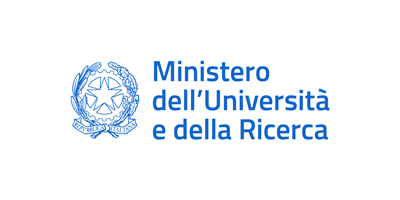Research
Research areas
Atmospheric Chemistry and Observation
Through its high-altitude observatory at Col Margherita and mobile field campaigns, CeTrA investigates the chemical composition of the atmosphere and its dynamic interactions with terrestrial and cryospheric systems. Research activities include aerosol characterization, gas-phase pollutant analysis, long-range transport studies, and climate-relevant processes such as deposition and radiative forcing, supported by high-frequency measurements and integrated datasets.
Climate and Paleoclimate
CeTrA provides instrumental and infrastructural resources for the broad-spectrum chemical and physical characterization of contemporary environmental matrices and paleoenvironmental archives. This area supports research on modern climate dynamics and the reconstruction of past climatic conditions, enabling the study of long-term environmental trends and the processes driving climate variability.
Environmental Analytical Chemistry
CeTrA develops and applies advanced analytical methodologies for the detection and quantification of trace and ultra-trace organic and inorganic contaminants in environmental matrices, including air, water, soils, sediments, and biota. This area supports research on pollutant fate, transport mechanisms, exposure pathways, and environmental impact, with a focus on regulatory and emerging substances such as heavy metals, PFAS, flame retardants, and microplastics.
High-Resolution Imaging and Molecular Profiling
The centre applies advanced techniques such as LA-ICP-MS, DESI-IM-TOFMS, and Orbitrap-based high-resolution mass spectrometry for the spatially resolved detection, identification and semi-quantitative analysis of molecular and elemental species. These approaches are used in environmental, biomedical, and material science studies, supporting molecular fingerprinting and imaging at micro- and nano-scales
Human and Ecosystem Exposure Assessment
Through integrated multi-matrix analysis (e.g., air, food, water, and biological samples), CeTrA supports studies on environmental exposure and risk assessment. Research in this area targets the identification of contaminants of concern, their bioavailability, and their potential health effects, aligning with One Health and planetary health frameworks.
Physico-Chemical Characterization of Materials
CeTrA provides infrastructure for high-resolution morphological, elemental, and structural analysis of advanced materials, functional coatings, and engineered nanomaterials. This includes the use of techniques such as SEM-EDX, micro-XRF, AFM, and vibrational spectroscopy to support innovation in sustainable materials, circular economy applications, and heritage science.
Research projects
- ITINERIS - Italian integrated environmental research infrastructures system
Coordination: CNR-IMAA; Ca’ Foscari P.I.: Marco Roman; Website: ITINERIS - INSYDE-HU - Integrated systemic detection of pollutants in the human body
Coordination: UNIVE; Ca’ Foscari P.I.: Marco Roman; Website: INSYDE-HU - PROMETEUR - Paleofire reconstruction form mediterranean speleothems using trace organic compounds
Coordination: ISP-CNR; P.I.: Elena Argiriadis - DECIPHER - Disentangling mechanisms controlling atmospheric transport and mixing processes over mountain areas at different space- and timescales
Coordination: UNITN; ISP-CNR P.I.: Warren Raymond Lee Cairns; Website: DECIPHER - iNEST - Mountain innovation ecoystem
Coordination: UNIPD; Ca’ Foscari P.I.: Fabrizio Panozzo; Website: Spoke 6 iNEST [ITA]
- CATCH-O - Concordia atmospheric chemistry observatory
Coordination: UNIFI; Ca’ Foscari P.I.: Marco Roman; Website: CATCH-O [ITA] - PASSPORT - microplastics, plastic additives and plastisphere in Antarctic continental snow: transport mechanisms and biotransformations study
Coordination: ISP-CNR; P.I.: Elisa Scalabrin
- ProCleanLakes - Integrated emerging approaches for joint protection and restoration of natural lakes in the spirit of European life heritage support
Coordination: BOKU University; Ca’ Foscari P.I: Chiara Zanardi; Website: ProCleanLakes - Beyond EPICA - Beyond EPICA Oldes Ice Core: 1.5 Myr of greenhouse gas - climate feedbacks
Coordination: ISP-CNR; Ca’ Foscari P.I: Carlo Barbante; Website: Beyond EPICA - ICEBERG - Innovative community engagement for building effective resilience and arctic ocean pollution-control governance in the context of climate change
Coordination: Oulu University; ISP-CNR P.I.: Tommaso Tesi; Website: ICEBERG
- MICRO-CLIMATE - Micron-scale ice core reconstruction of abrupt climate changes
Coordination: UNIVE; Ca’ Foscari P.I. (Supervisor): Carlo Barbante; Website: MICRO-CLIMATE - SKYNET - Estimating the ice volume of earth's glaciers via artificial intelligence and remote sensing
Coordination: UNIVE; Ca’ Foscari P.I. (Supervisor): Carlo Barbante; Website: SKYNET - MESMERISE - Impurities in the microstructure of Eemian greenlandic ice via laser ablation
Coordination: UNIVE; Ca’ Foscari P.I. (Supervisor): Carlo Barbante; Website: MESMERISE - IMAGICS - Isotope imaging for ice core science
Coordination: UNIVE; Ca’ Foscari P.I. (Supervisor): Marco Roman; Website: IMAGICS
- BREATHING - Best practices to adapt to climate change: interregional approach to reduce urban emergent contamination
Coordination: UNIVE; Ca’ Foscari P.I.: Andrea Gambaro; Website: BREATHING - ECOMAPS - Environmental and climate change observation through urban air pollution monitoring
Coordination: ISP-CNR; P.I.: Elena Gregoris; Website: ECOMAPS
- Ice Memory
Coordination: ISP-CNR; P.I.: Jacopo Gabrieli; Website: Ice Memory [ITA], Ice Memory Foundation
- CeTrA 2.0 - Infrastruttura di ricerca Centre for Trace Analysis (CeTrA)
Coordination: UNIVE; Ca’ Foscari P.I.: Marco Roman; Website: CeTrA 2.0 [ITA]
- INSINERGIA PNC-SIN - Development and implementation of two specific pilot operational programs for the definition of integrated health-environment-climate intervention models in contaminated sites of national interest
Coordination: Veneto Region; Ca’ Foscari P.I.: Marco Roman
Publications
- Alterio, F. et al. Stress responses in blood donors: Oral fluid hormone dynamics and implications for donor support. Steroids 2025, 109604
- Becce, D. et al. Wind Tunnel Evaluation of Plant Protection Products Drift Using an Integrated Chemical–Physical Approach. Atmosphere 2024, 15, 656
- Barbaro, E. et al. First evidence of benzothiazoles in arctic aerosols: Seasonal trend and sources attribution. Sci. Total Environ. 2024, 177722
- Barbaro, E. et al. Chemical characterization of atmospheric aerosols at a high-altitude mountain site: a study of source apportionment. Atmos. Chem. Phys. 2024, 24, 2821
- Crozzolin, L. et al. Stabilizing cubic γ-Ga₂O₃:Cr³⁺ spinel nanocrystals by size confinement into mesoporous silica nanoreactor channels. J. Mater. Chem. C 2024,12, 10929
- Feltracco, M. et al. Insights into size-segregated distribution of benzothiazoles in indoor aerosol from office environments. Environ. Sci.: Atmos. 2024, 4, 571
- Feltracco, M. et al. The disinfection by-products are in the air: Aerosol measurements in the urban area of Venice. Atmos. Environ. 2024, 120224
- Gregoris, E. et al. Microplastics analysis: can we carry out a polymeric characterisation of atmospheric aerosol using direct inlet Py-GC/MS? J. Anal. Appl. Pyrolysis 2023, 105903
- Rosso, A. et al. Quantification and Chemical Characterization of Plastic Additives and Small Microplastics (<100 μm) in Highway Road Dust. Toxics 2023, 11, 936





